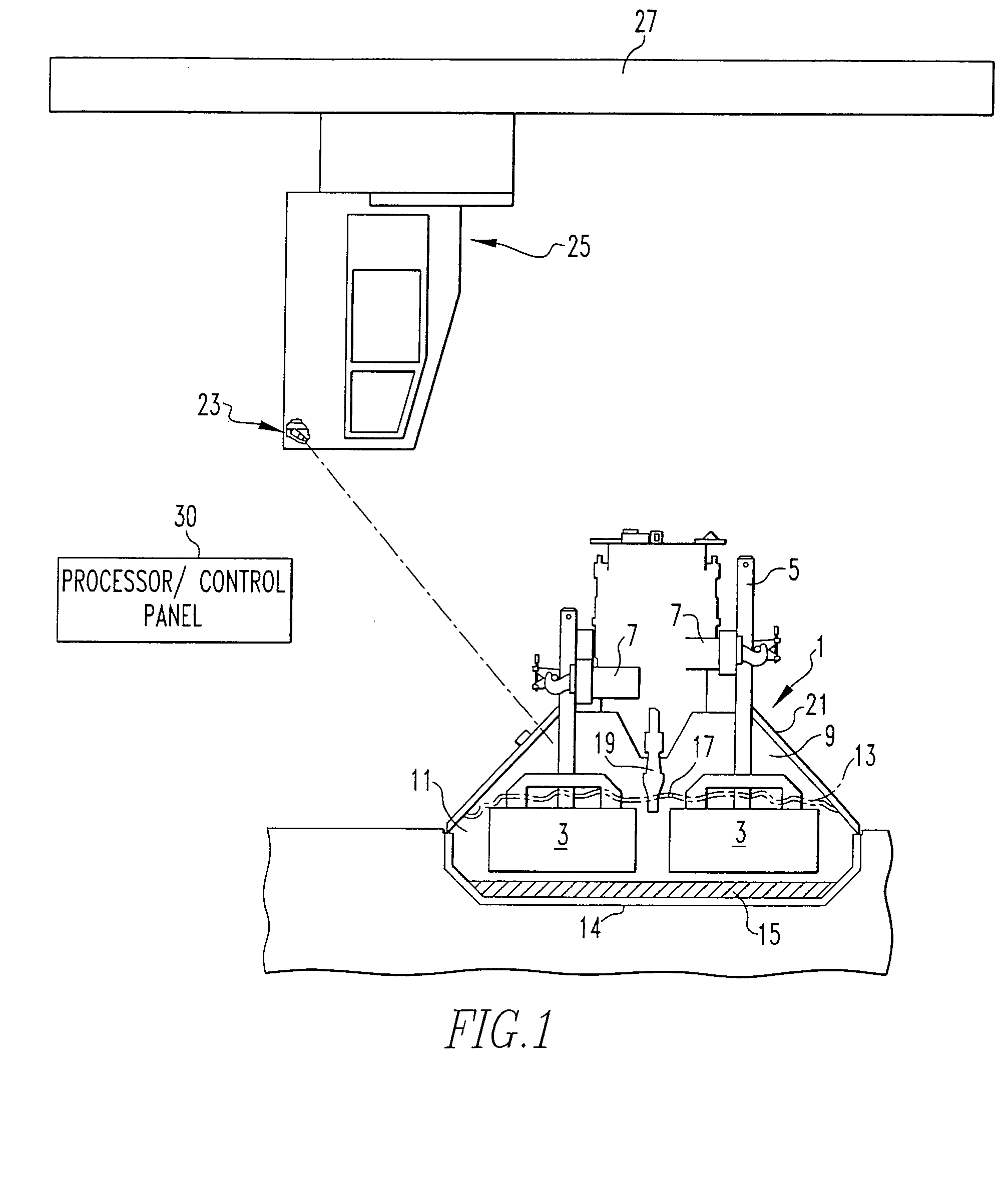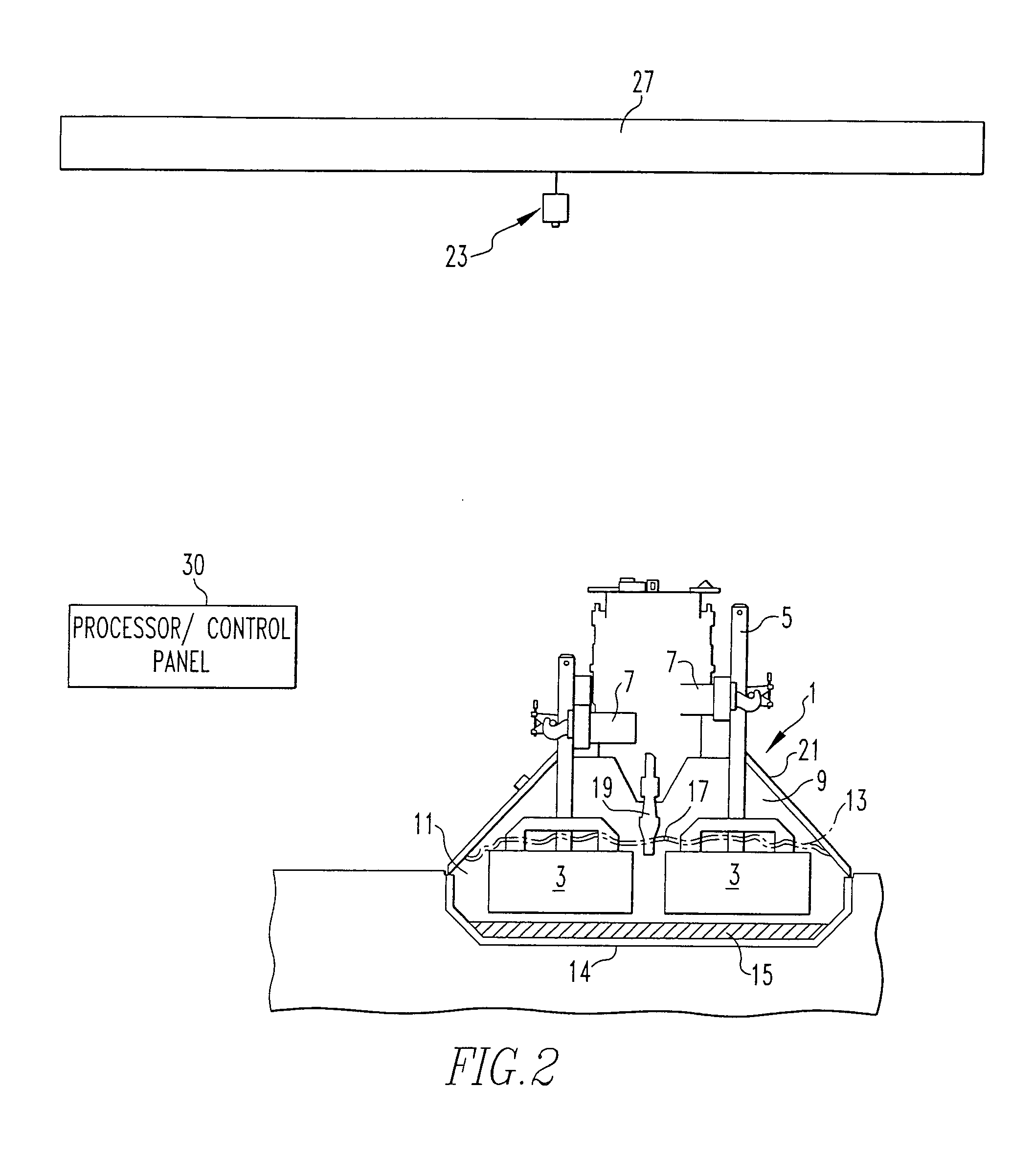Use of infrared imaging to reduce energy consumption and fluoride comsumption
a technology of infrared imaging and fluoride, applied in the field of control of aluminum production cells, can solve problems such as increasing power consumption, and achieve the effect of maintaining the heat balance of the pot and minimizing the energy requirements for operating an aluminum electrolysis cell
- Summary
- Abstract
- Description
- Claims
- Application Information
AI Technical Summary
Benefits of technology
Problems solved by technology
Method used
Image
Examples
Embodiment Construction
[0024] In FIG. 1 there is shown an electrolytic cell 1 for aluminum production, including carbon anodes 3 suspended by anode rods 5 from a bridge 7. The anodes 3 are situated within a cell chamber 9.
[0025] A molten cryolite electrolyte 11 containing dissolved alumina is maintained at approximately 950-960° C. within the chamber 9. A layer of solid crust 13 forms above the molten electrolyte 11 surrounding the carbon anodes 3. The crust 13 is generally several inches thick. An electric current passes from the anodes 3 to a carbon cathode 14, thereby forming a molten metal pad or aluminum pad 15.
[0026] The movable bridge 7 is adjustable vertically to enable the carbon anodes 3 to be elevated or lowered relative to the molten electrolyte bath 11. Alumina is periodically added to the bath 11 as needed, through a feeder mechanism 19. When alumina is added to the bath 11, the feeder mechanism 19 is thrust downwardly to punch a hole 17 in the crust 13.
[0027] Tapping molten aluminum from...
PUM
| Property | Measurement | Unit |
|---|---|---|
| temperature | aaaaa | aaaaa |
| temperature | aaaaa | aaaaa |
| temperature | aaaaa | aaaaa |
Abstract
Description
Claims
Application Information
 Login to View More
Login to View More - R&D
- Intellectual Property
- Life Sciences
- Materials
- Tech Scout
- Unparalleled Data Quality
- Higher Quality Content
- 60% Fewer Hallucinations
Browse by: Latest US Patents, China's latest patents, Technical Efficacy Thesaurus, Application Domain, Technology Topic, Popular Technical Reports.
© 2025 PatSnap. All rights reserved.Legal|Privacy policy|Modern Slavery Act Transparency Statement|Sitemap|About US| Contact US: help@patsnap.com


